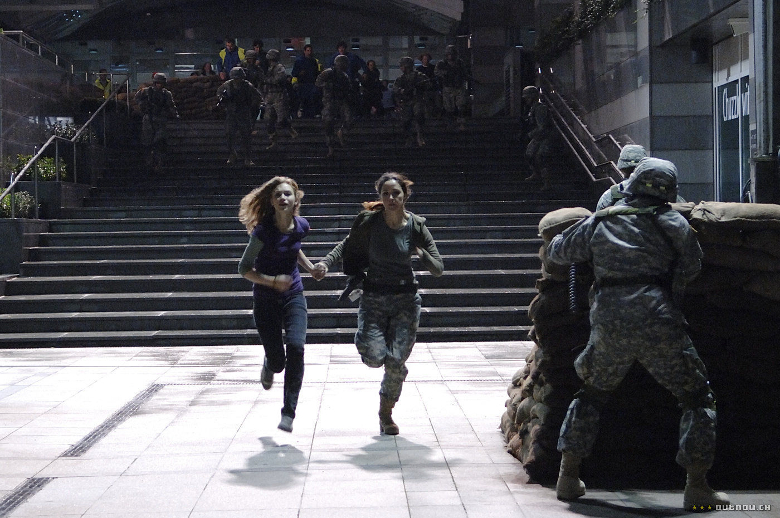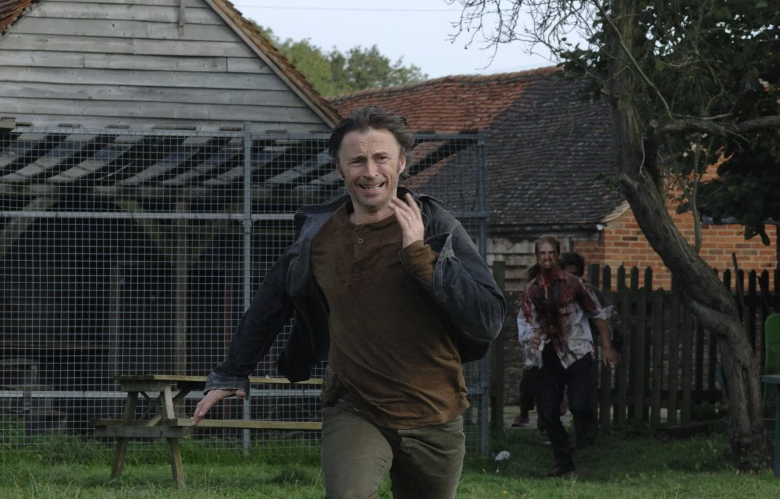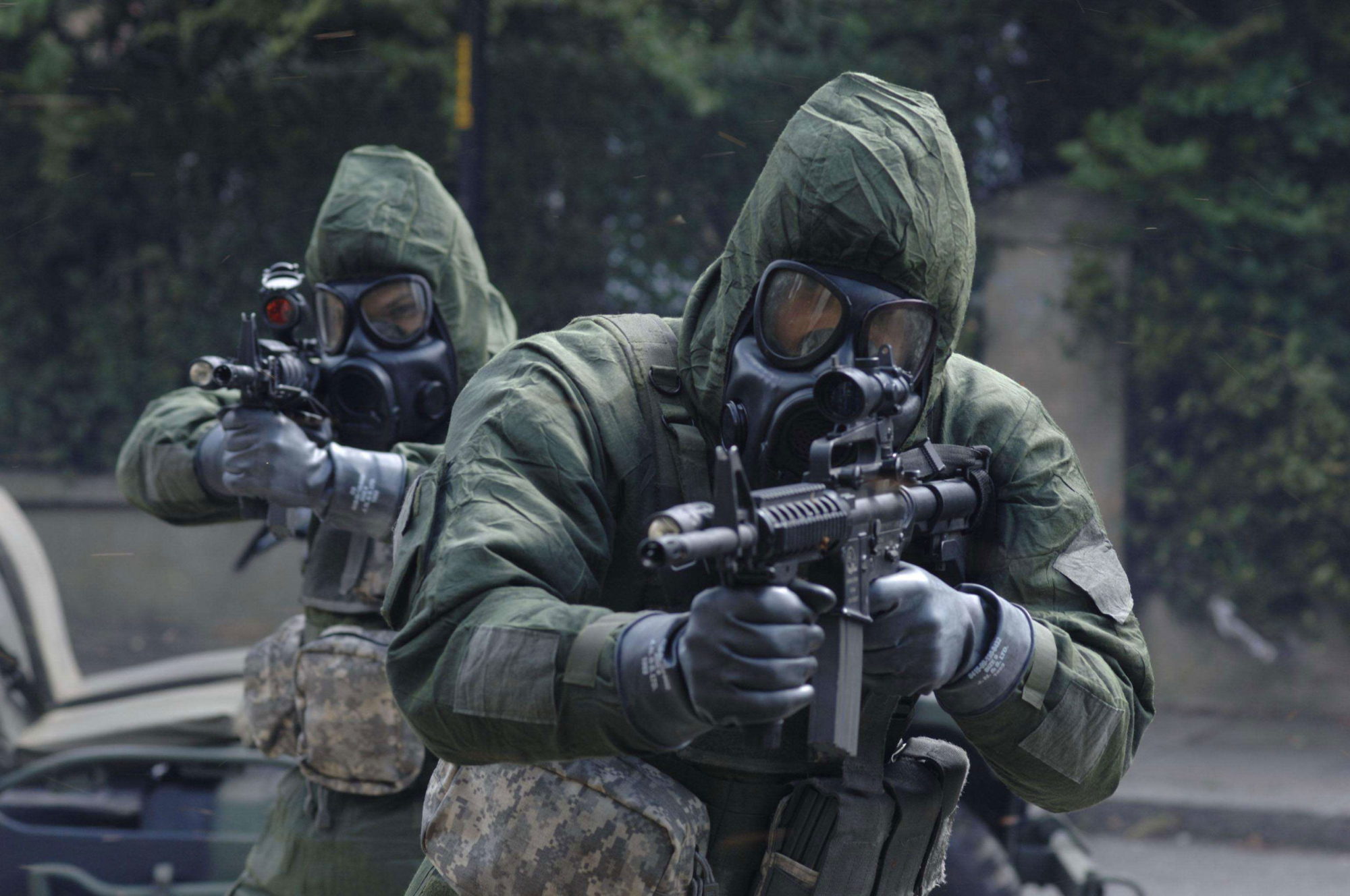I’ve never been Team Zombie. Out of the pantheon of horror critters that exist, the Zombie always felt a little redundant. Slow, shuffling walks, a basic need to “braaiinnss!” and their penchant in parodies for having limbs ripped off and still sliding along the floor like human-esque slugs just never really did it for me. Give me the tantalising mystery of a witch’s plot, or the smug, aristocratic violence of a vampire coven, I say! This was, of course, until I watched my generations version of George A. Romero’s Night of the Living Dead – 28 Days Later.
After watching that movie and other movies like 28 Days Later and the beautiful cinematography that punctuates them, I began to see zombies as something more meaningful to horror… or, at the very least, more reflective. Their terror never lay in their prowess to hunt you in the night, nor in their influence over your life. Instead, they inspire terror through sheer volume and isolation. They are a society defunct. A civilisation collapsing under the weight of their undead. A representation of something more harrowing than horrifying: where do we draw the line between what is human and what is not?
It’s a question that we’ve had hammered home to us constantly recently. It’s something that COVID-19 taught us doesn’t just belong to the realms of horror cinema… but I’m getting ahead of myself.
28 Weeks Later Synopsis
The most inspiring inclusion in Danny Boyle’s original film, 28 Days Later, was in switching shuffling, placidly violent zombie, to rage-filled, Olympic sprinting infected. It’s the last word that really makes all the difference here. The change from “zombie” to “infected” rearranges our perception of what to expect in the second film.

We find Britain under Lockdown (LOL) and under the guard of an American led-international operation to rehome those dispossessed by the outbreak in the first film. We hone in on Tammy (Imogen Poots) and Andy (Mackintosh Muggleton) as they are reunited with their father, Don (played by the inimitable, Robert Carlisle) and hear of their mother’s tragic death at the hands of the infected.
But, uh oh, mum actually isn’t dead, as the kids find out when they break out of the safe zone (we’ve all lived through enough lockdowns by now, so we know how plausible this is) to visit their old family home. Instead, mum escaped the swarm that attacked her at the movie’s beginning as she has a rare mutation that allows her to survive the Rage virus. And she is pissed at Don, who left her behind. Which, short side note, but imagine having two kids and being pissed at your husband for not coming back to certain death to rescue you when you have TWO KIDS stranded in bloody Spain. I mean come on, Alice (the mum, played by Catherine McCormack) life isn’t a shoddy Shakespeare play, mangled by Hollywood, and then beamed directly into your definition of what love is. Be pragmatic, jeeze.
Anyway, for those that haven’t seen it, that’s a pretty good set up without spoiling the entirety of the movie. So we move…
Zombie Flick or Pandemic Apocalypse?
The crux of this article will come as a shock to no one as I’ve been hinting at it pretty hard for the entirety of what’s written. But are movies like 28 Weeks Later even zombie films at all?
Yes. And, well, no.
Lemme explain.

What we get is a hybrid bloodying of the lines between zombie horror and infection terror. A great place to position this film might be closer to the monster movies of the 1950’s. An Invasion of the Body Snatchers-type endeavour that brings new consequences to one of the most challenging questions that pervade zombie films. When are we no longer human?
This film (and other movies like 28 Days Later) asks this question perfectly. Let’s take Alice as our starting point.
When Alice is relocated to the safe zone, she’s studied for her genetic resilience to the Rage Virus. She is infected, yet shows none of the angry murdering symptoms that affected everyone else in Britain. So while Imogen (Alice’s daughter) would be considered wholly human as she is not infected with the Rage Virus, would Alice? Is the infection the point of becoming non-human, or are the symptoms, and their stripping away of civility, what makes those infected non-human? If so, what makes us human? Civility? Love? Nothing?
The reason this question is so vital to these films is that it dictates who is – and who is not – eligible to be killed. We see hundreds of people being shot, burned, or otherwise mutilated, and we don’t shirk from it. We understand that it’s kill or be killed. But aren’t we, as watchers, culpable in that that type of thinking? And, if we are, then it would be good to know where the line between human and non-human is, if only to be oneself safe from slaughter.
Movies like 28 Weeks Later
I went on a date, not long after I came out, with a guy that worked in a card shop. He took me on a date (well, I had to pay for my own popcorn and he left me outside the cinema to go to a party, so maybe this was date-adjacent) to see one of the movies like 28 Weeks Later: The Crazies. It’s a remake of a film that shares more than a few similarities with 28 Weeks Later. After a plane crash in the American Midwest, a biological agent is dispersed amongst the population of a fictional farming town that turns the residents into violent killers (crazies). I mention this film because the 1973 original was written and directed by George A. Romero (mentioned above). I find this fascinating, and an authentication of my question about when humans are no longer humans, as he is the father of modern zombie cinema. Yet here he was, playing with this idea of a hybrid between zombies and crazies. (I never went on another date with that guy, by the way, for anyone desperate to know.)
— FOUNDATIONS OF HORROR —
Further explore these subgenres & tropes. more>>
#Zombie horror | #Monster horror | #Zombies Rule! That is the Rules for Zombieland

Another movie like 28 Weeks Later is a contentious one. A “dare I say it?” hated one. But it’s one that occupies a similar vein nonetheless. The Happening. Now while M. Night Shyamalan may no longer be synonymous with stellar plot twists (looking at you, Old), the premise of this film is interesting. And I mean only the absolute limits of definable premise. Something (that twist is NOT included in this analysis) is making people kill themselves. There. Boom. Had this film not read like a comedy (“Oh, you’re plastic”), this could have been a unique flip on this quasi-zombie subgenre. The violence, instead of radiating outwards onto everyone else, turns itself inwards and consumes a person’s subconscious to the point of brutal and horrific suicides. Arguably, far more terrifying than becoming a blood thirsty monster.
Last Updated on August 21, 2022.

